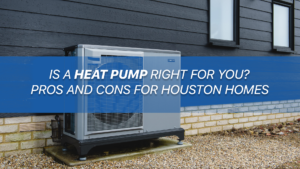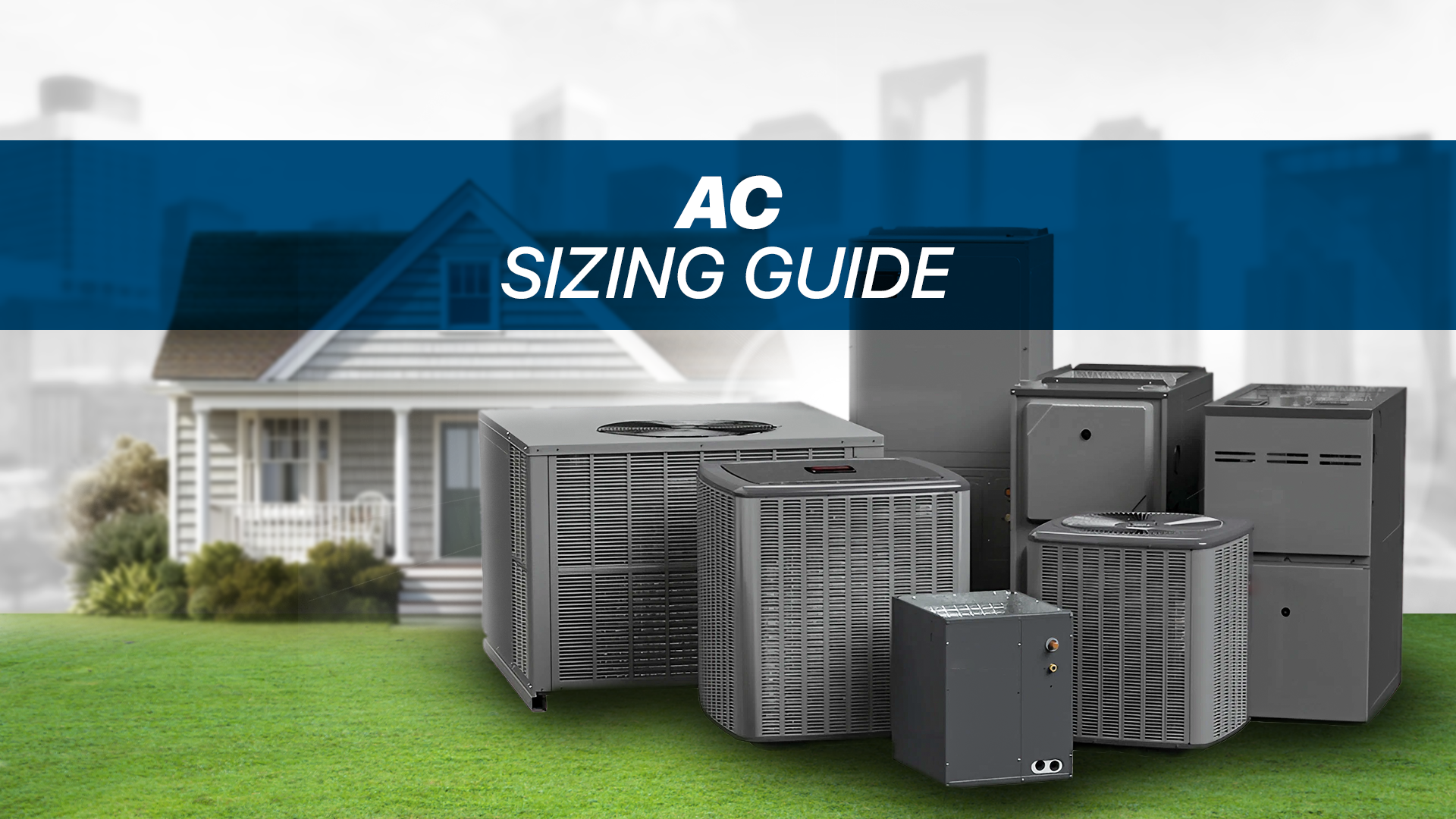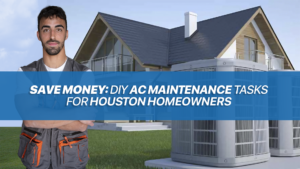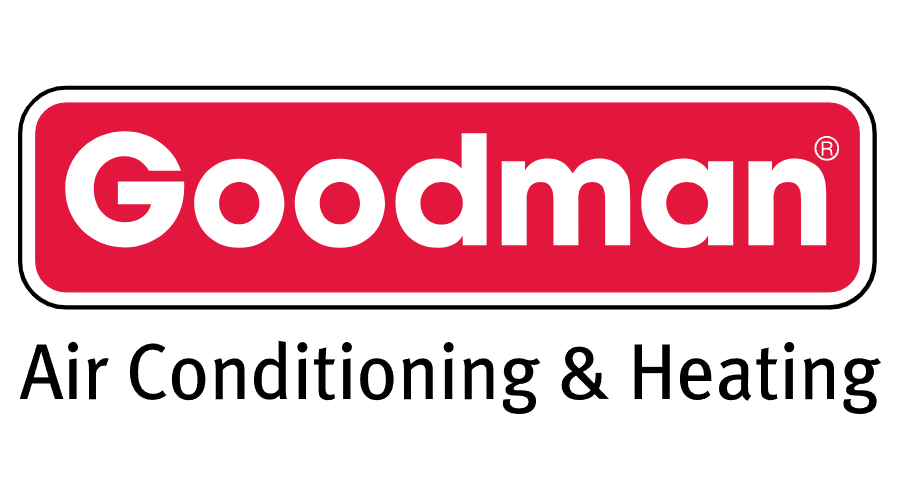As the warm weather approaches, most homeowners start thinking about getting their air conditioning units serviced and ready for operation. But for some, it may be time to replace an aging AC unit altogether. One of the most important decisions in selecting a new air conditioner is getting the proper tonnage or size. Our comprehensive guide will walk you through the factors to consider when determining the right AC tonnage for your home.
How Is AC Unit Size Measured?
An air conditioner’s size is rated by the tonnage of cooling it provides. What does tonnage mean in terms of an AC unit? It refers to the amount of heat removed from your home in one hour. Specifically, one ton of cooling equals 12,000 British Thermal Units (BTU) per hour. BTU is a standard measurement used to denote the amount of energy needed to heat or cool a space. So a “two-ton” central air conditioning unit can cool 24,000 BTUs per hour, a three-ton unit 36,000 BTUs, a five-ton unit 60,000, and so on. The higher the BTU rating, the more cooling power the air conditioner provides. A right-sized unit will efficiently cool your home while maintaining the best humidity levels. An oversized AC will not only cost more upfront but also lead to higher energy bills in the long run.
Factors That Determine Appropriate AC Size
Many aspects affect your home’s cooling requirements and therefore the correct AC system size. The major considerations include:
- Square footage – The first step is calculating the total conditioned square footage the unit will need to cool. This includes all spaces with cooling vents. As a rule of thumb, you need 20 BTUs per square foot.
- Home construction – Well-insulated homes with modern windows require less tonnage than older homes with poor insulation and leaky windows. Newer homes often only need 20 BTUs per square foot.
- Window area – More windows mean more heat gain, increasing the size needed. South and west facing windows get the most direct sun in the summer.
- Ceiling height – Air conditioners must cool more volume in homes with high ceilings, meaning more tonnage is required.
- Occupants – More residents means more body heat to cool. Add 600 BTUs for each additional occupant.
- Internal heat sources – Heat from appliances, computers, lighting, and electronics increases cooling requirements.
- Roof and attic – Dark shingle roofs absorb more heat. Proper attic insulation and ventilation lower heat transfer into living spaces.
- Climate – Homes in hotter climates need more tonnage to keep up with cooling demands.
- Sun exposure – Direct sun on the home, especially on the air conditioner’s side of the house, increases heat absorption.
- Personal comfort – Some homeowners prefer their spaces to be extra cold in the summer!
Your HVAC contractor can assess these factors and recommend the appropriate tonnage using a Manual J calculation. While the 20 BTUs per square foot guideline works in many cases, the specifics of your home must be considered for the most accurate sizing.
Tonnage Guidelines Based on Square Footage
As a starting point, the following tonnage guidelines apply to typical single-story homes with average insulation, 8 foot ceilings, and 600 square feet per occupant:
- Up to 1,200 square feet – 2 tons
- 1,200 to 1,800 square feet – 2.5 tons
- 1,800 to 2,500 square feet – 3 tons
- 2,500 to 3,500 square feet – 4 tons
- 3,500 to 4,500 square feet – 5 tons
Two-story homes often need different tonnage on each level. The upper floor might be adequately cooled by a two-ton unit while the first floor needs three tons. Multi-zone systems allow customizing the airflow and temperature control for different areas.
For larger homes over 4,500 square feet, add half a ton for every 500 square feet over 4,500. Home additions also bump up cooling requirements.If you live in a hot climate, increase capacity by half a ton. For older homes, add a half or full ton over the guideline to account for less insulation. Mobile homes often need one ton per 500-600 square feet since they have minimal insulation.
Signs You Need a Larger AC Unit
If your current air conditioner is too small, you’ll notice the signs during the hottest days of summer:
- It runs nearly nonstop but the house never seems to reach the thermostat setting.
- Cooling vents on the first floor feel cold but second floor rooms stay warm. Hot air rises so undersized units struggle to push cold air upstairs.
- Humidity levels stay high inside your home. AC units remove moisture from the air. An undersized system won’t effectively dehumidify.
- Your energy bills are extremely high even when you keep the thermostat turned up. An overworked AC runs constantly, using excessive electricity.
- The air conditioner frequently shuts off due to icy coils. This freezing over, or “freezing up”, happens when a small AC can’t keep pace with heat.
- Your home’s indoor temperature is at least a few degrees warmer than the outdoor temperature on hot days.
- You find it necessary to use additional fans to feel comfortable indoors.
If you experience any combination of these issues, it’s likely time to replace that aging window unit or central air system with a larger capacity unit.
What About Oversized AC Units?
Homeowners often think bigger is better when it comes to cooling power. But an oversized air conditioner carries its own set of downsides. A unit with too much capacity will cool your home too quickly before shutting off. This prevents it from effectively dehumidifying the air. You end up with a clammy, uncomfortable environment. Oversized units also cause temperature fluctuations as they rapidly cycle on and off. Plus, they use more energy over time than properly sized units that run more steadily.That means you pay higher electricity bills for excessive runtime without getting noticeably better comfort. And an oversized AC unit can wear out faster from excessive cycling, shortening its lifespan.
Use Multiple Units for Optimal Comfort
Some homes require using more than one AC unit to achieve ideal temperatures throughout. Here are situations where installing multiple units works well:
- For two-story homes, install a larger downstairs unit to cool common areas and a smaller upstairs unit for bedrooms. This allows customizing airflow where needed.
- Separate mother-in-law suites, additions, garages, and other secondary spaces each benefit from an independent AC unit.
- Individual units in bedrooms provide personalized cooling and improved comfort for family members with different schedules and preferences.
- Mini-split ductless systems are an affordable option to add supplemental cooling to problematic areas like sunrooms.
- Multi-zone systems utilize two, three, or more AC units on the same property controlled by one thermostat. This allows precision temperature management.
With smart thermostats and advanced AC controllers, it’s easy to orchestrate multiple air conditioning units to work in unison. This provides whole-home comfort and efficiency.
Air Conditioner Efficiency Ratings
When selecting a replacement AC unit, efficiency should be a top consideration along with capacity. Central air conditioners are rated by Seasonal Energy Efficiency Ratio (SEER). The higher the SEER, the more energy-efficient the AC. Look for a SEER rating of 15 or greater. While the upfront cost is higher, the long term energy savings make it worthwhile. You can expect to cut electricity usage and cooling costs by 30% or more with a high efficiency system. Inverter-driven variable speed compressors are the latest innovation for achieving exceptional SEER scores. These systems intelligently ramp up and down based on the current temperature. Mini-split ductless heat pumps also offer outstanding efficiency for homeowners wanting to supplement existing HVAC systems or heat and cool problem areas.
Work With an Expert for Ideal Sizing
Choosing the properly sized air conditioner is critical for comfort, efficiency, and longevity. While guidelines help determine general requirements, consider having an HVAC pro perform a detailed Manual J calculation to recommend the ideal AC system for your home’s specifications. Companies like Turbo AC Repair have highly trained techs experienced in all aspects of AC sizing, installation, and repair. Give them a call at (281) 626-5938 or visit https://turbohomeservices.com to schedule a consultation. Their experts can ensure you get the perfect AC for your needs. Proper sizing along with regular maintenance will keep your air conditioner running optimally for years of cooling relief.









